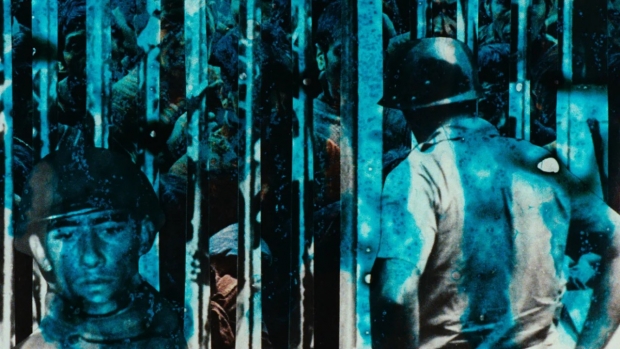The latest survey takes a break from the usual focus on new shorts to highlight classic films connected by a specific technique.
The February 2024 edition of Binocular Briefs takes a break from our usual focus on new shorts. This month we highlight classic films connected by a technique. During the last few years I developed an unhealthy interest in collage animation to the point where I wrote a book about it, Earmarked for Collision.
Collage animation has a long history but has not been given a lot of attention as a while. It’s a rebellious, DIY technique that has counter-cultural leanings and is also a technique that seamlessly transferred from analog to digital tools. In a world where we are assaulted with information every damn second, it’s as though we are in fact living now in a collaged world where we can’t make head or tail of what’s real or fake. Collage is a regular part of our lives now: photoshops, gifs, memes, AI, deep fake.
So, with that in mind, here’s a playlist of 5 essential yet often overlooked collage works.
Un Miracle, Robert Breer, USA, 1954
This is, for now, the first true collage animation film made. It's short, funny, and profane. In just over a minute, Breer creates an anarchistic, absurd work with a little bit of anti-Church venom (Pope Pius XII was allegedly a tad antisemitic with fascist leanings). For Breer, “It was called the funniest film in the world ever made or something like that. Last 30 seconds. Not funny anymore, but in those days, collage was new.” Although short and somewhat minimalist, Un Miracle takes photomontage elements of Dada collages while anticipating the work of Stan Vanderbeek and Terry Gilliam, among others.
The Age of Barbarians, Sándor Reisenbüchler, Hungary, 1970
The Age of the Barbarians serves up a vomiting rainbow collision of haves and have-nots. Behind all the material seduction, Reisenbüchler wants us to see the real human costs of so-called progress. And barbarians here have multiple meanings. Yes, there's the endless cycle of violent barbarians. Still, Reisenbüchler also seems to comment on the barbarian nature of advertising, the brutal ways of capitalism that freely destroys everything in its path for a little more profit. In the end, we see rows and rows of dead bodies. Nothing good can come until we stop racing there and start embracing here.
Join the Freedom Force, Martha Colburn, USA, 2009
Made in the Netherlands using an upright, three-dimensional glass technique, this choppy clash of collaged materials and hand-painted elements depicts - and celebrates - a history of protest across the planet. It's like a lo-fi punk recruitment video that unites all the protestors and causes. Backed by a song by Knalpot, Colburn creates a sort of anarchist, raw-raw mosh pit of cops and protestors. "I imagined an event where all the protestors came together for one large protest," writes Colburn. "CHICKENS ARE FRIENDS NOT FOOD,OIL KILLS!,WORK BE SILENT CONSUME DIE, BURN FAT- NOT OIL, END WAR NOW!"
The Night Hunter, Stacey Steers, USA, 2011
The Night Hunter (2011) finds a woman (played by images of Lillian Gish taken from an assortment of silent films) in a house caring for some mysterious eggs and snakes before turning into a bird. Steers noted, “I was a long-time fan of Lillian Gish, particularly her role in Broken Blossoms. I was very struck by psychological power of her performance, and I thought there might be a way to use her images in collages.”
Using imagery from silent films, Eadweard Muybridge, along with thousands of handmade collages, Steers excavates the turbulent mental, and emotional inner landscapes of women thrust into roles and selves they didn't choose. Restless and unsettled, they battle demons of doubt and creatures of anxiety and hesitancy in search of some semblance of self, being and happiness.
Erodium Thunk, Winston Hacking, Canada, 2018
The film was commissioned for a group show (named after Michael Snow's 1956 film, From A to Z). It's a mind-bending piece that feels like you've wandered into the mind and memory of a child from the 1970s or 1980s littered with fragments of magazine ads and TV commercials. Each ad image is disrupted by pieces of other ads, creating this warped and surreal imagery that combines nostalgia and satire. Hacking takes safe, familiar pictures and savagely alters them with all sorts of strange and surreal image interruptions.













